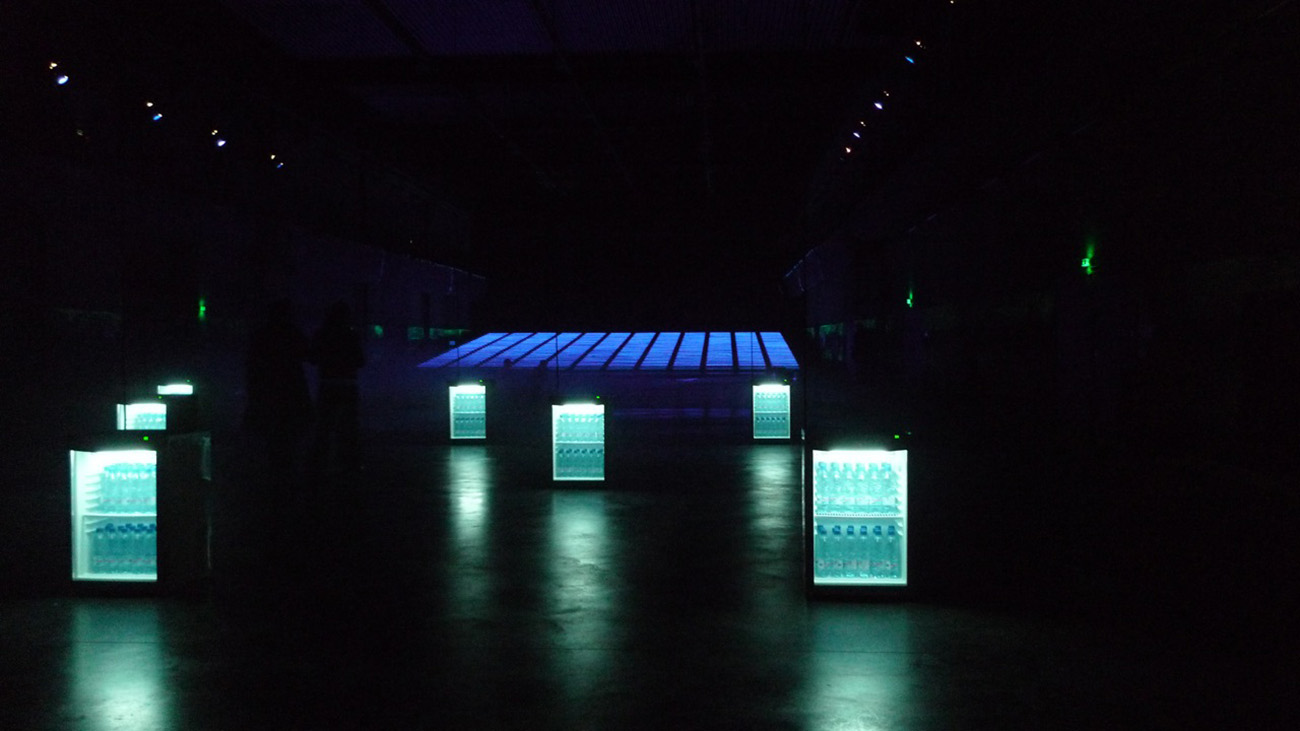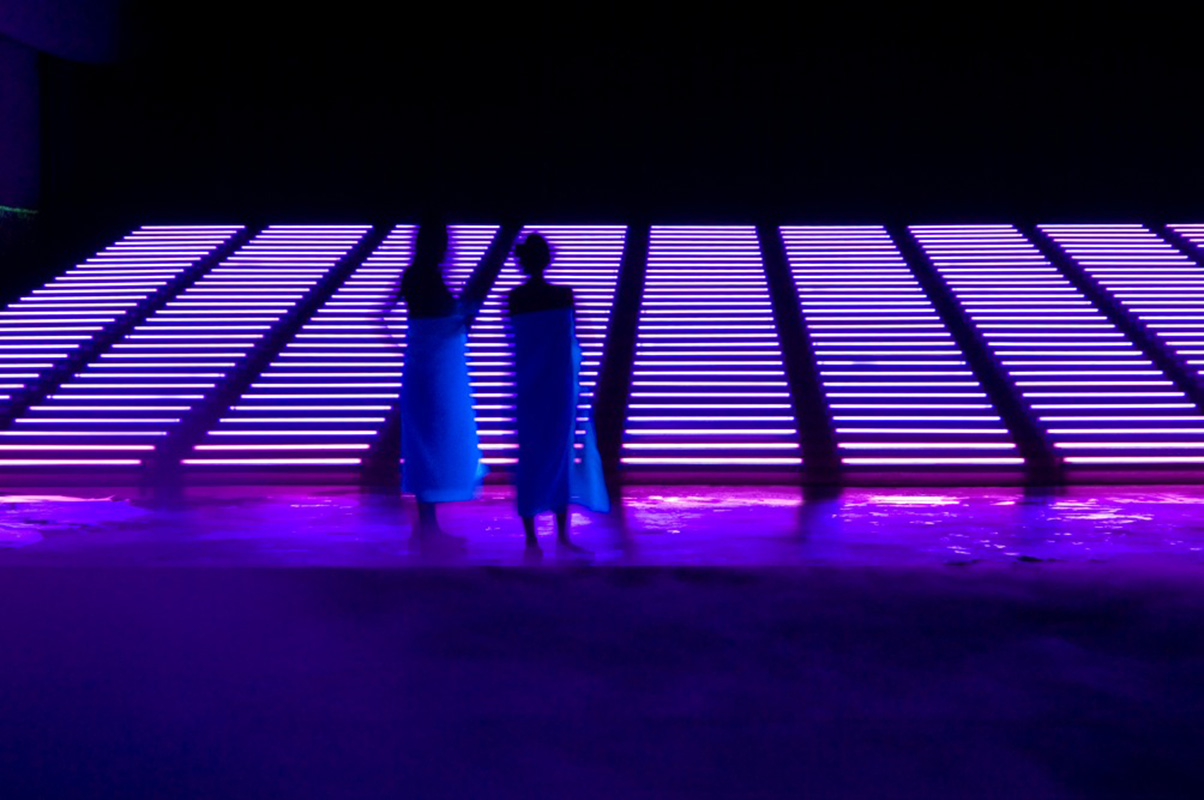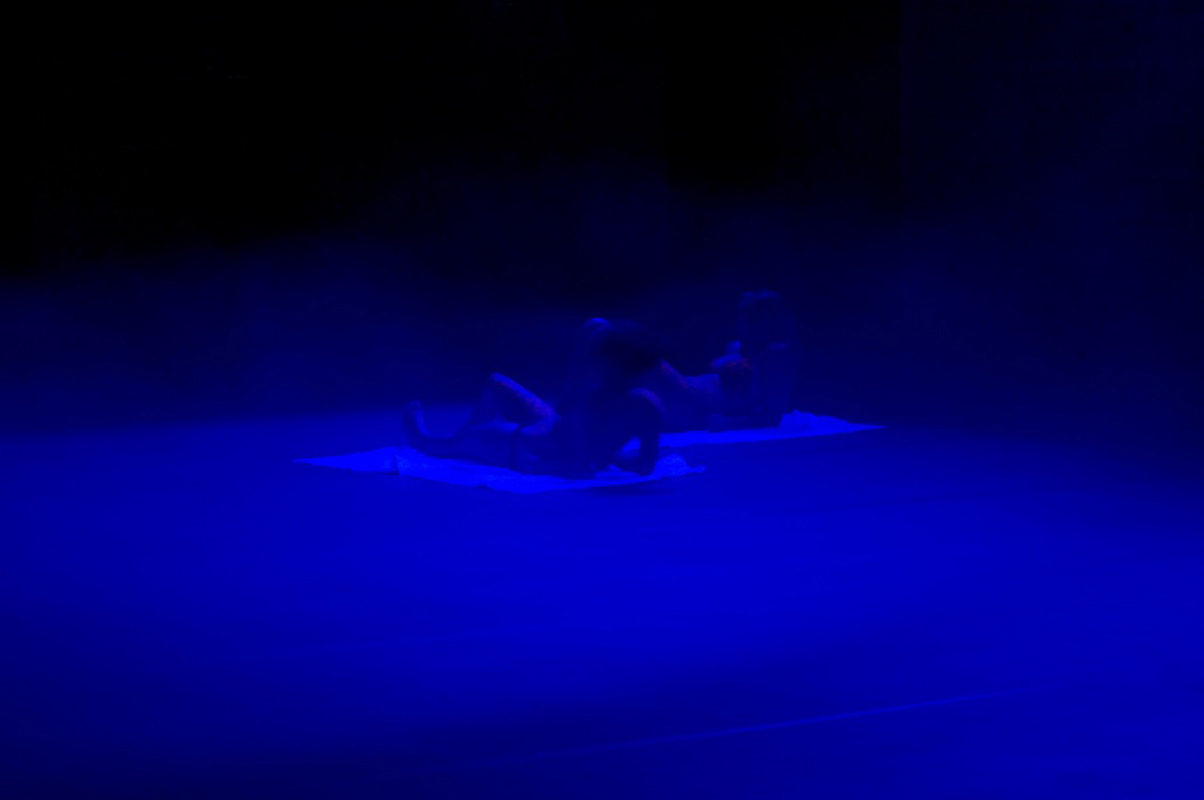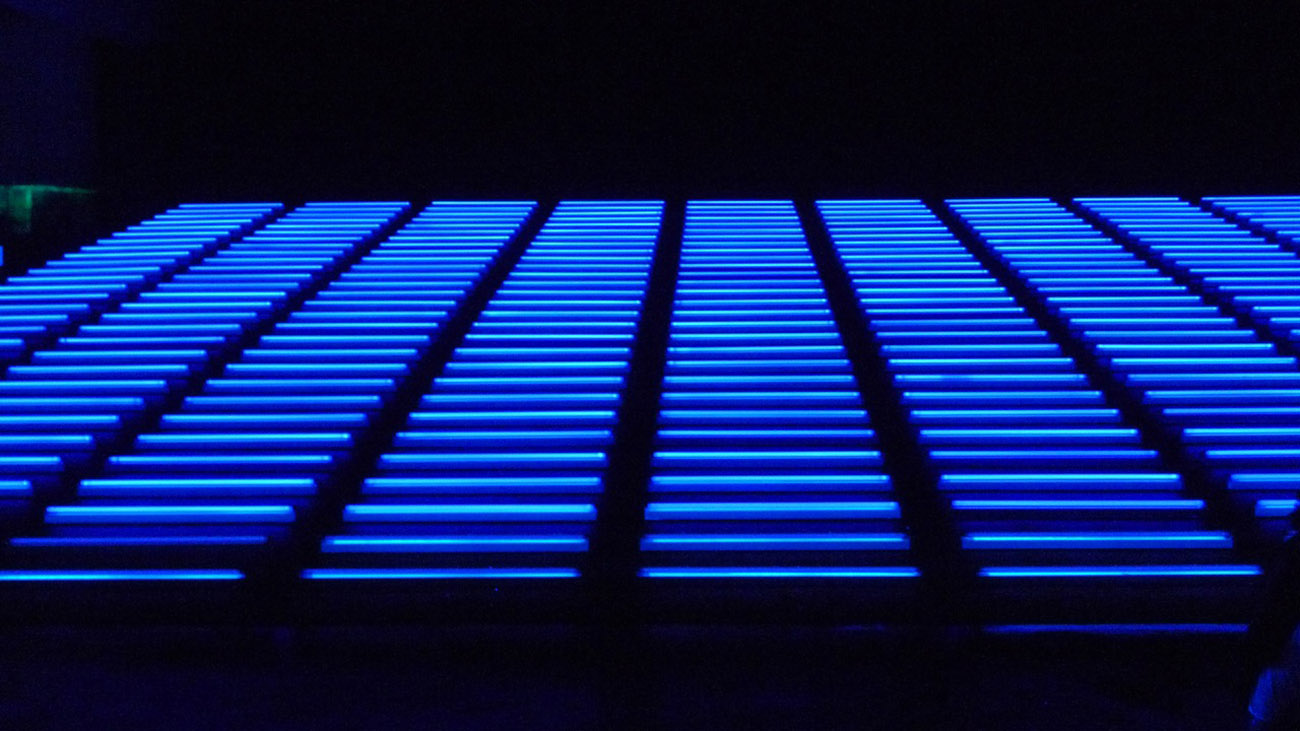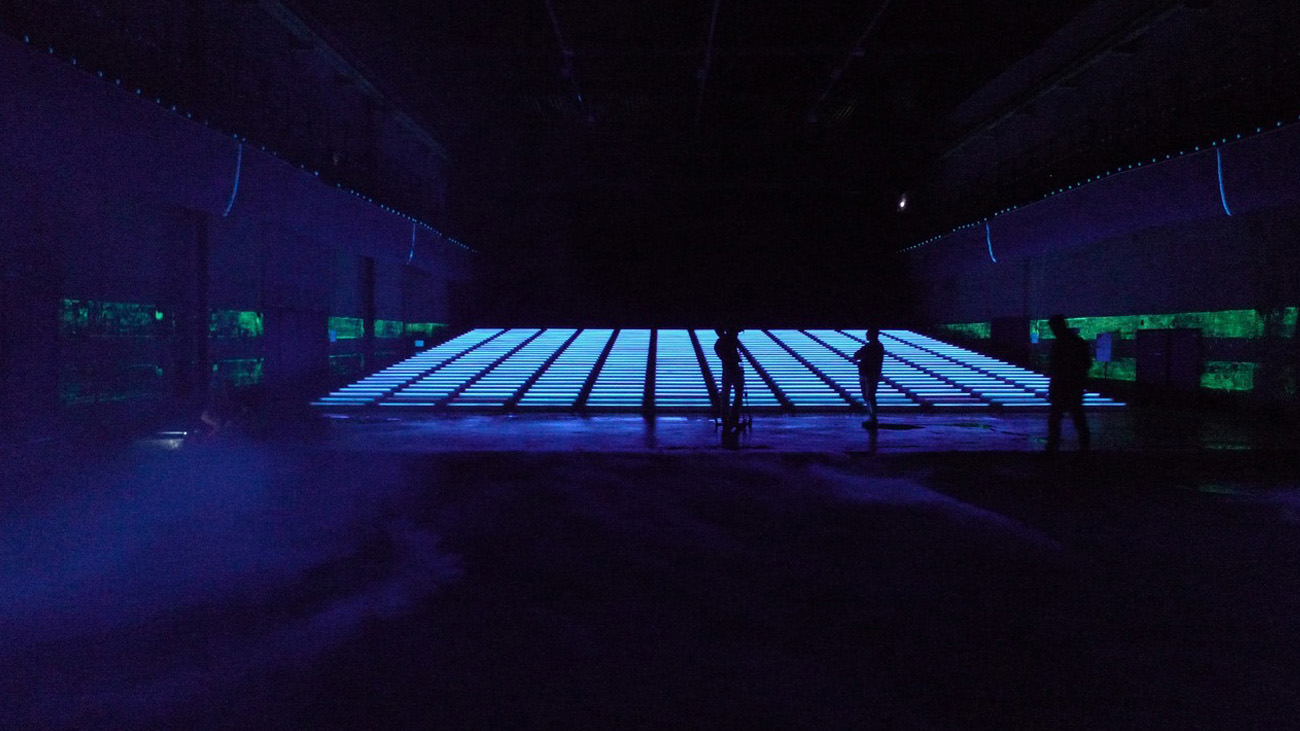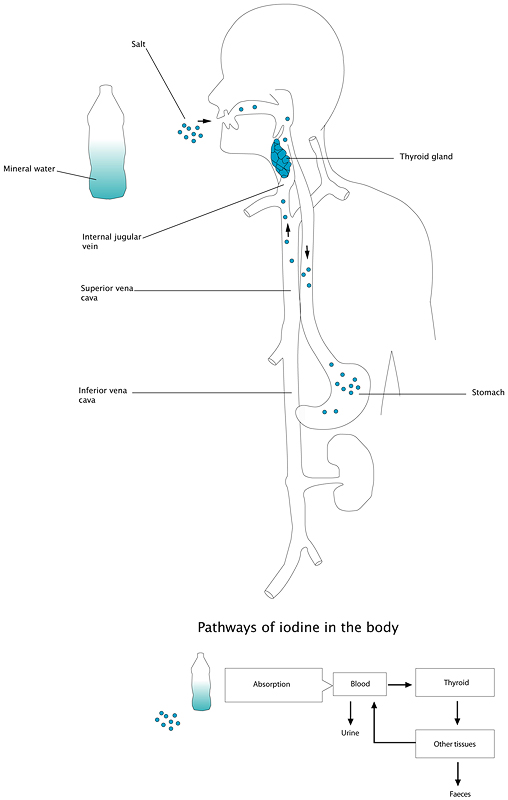
click
images fullscreen
< > 1 2 3 4 5 6
A winter beach
Iodized spindrift, skyline of ultravioletsIn 1857, you could read in prospectuses extolling the baths in the village of Saxon in the heart of the Swiss Alps, the following description:
“No valley in Switzerland has such a grandiose sweep. From Martigny to Sion, the vegetation is luxuriant and the climate, in summer, calls to mind that of Provence, and in winter the soft warmth of Nice’s lovely skies.”
That same year, the Academy of Medicine in Paris unequivocally established the presence of iodine in the waters coming from the Saxon spring, and this twenty years after a Swiss physician, Maurice Claivaz, had discovered the therapeutic properties of Saxon’s water. We know today, from Russel’s research carried out in the early 19th century, that iodine is a trace element that is vital for the manufacture of thyroid hormones. Lack of it lies at the root of goitre and that form of so-called endemic cretinism, references to which started to appear in the mid-18th century to describe a form of idiocy encountered among certain inhabitants of the Alps. Iodine does not occur in Alpine soils because of the diluvian erosion which took place at the end of the last ice age in the Quaternary, impoverishing the soil. The therapeutic properties of Saxon’s iodine-rich water thus turned out to be thoroughly suited to the treatment of goitre and cretinism in a population with a chronic shortage of iodine. The input of iodine into the body occurs essentially through sea food, but it can also be inhaled (spindrift on the shore, for example). Iodine is actually contained in large quantities in sea water, and in all sea products such as algae, fish and crustaceans. And so it was quite naturally, at the same moment, at sea as opposed to in mountains, during the first half of the 19th century, that these pharmacological virtues of salt water confirmed the therapeutic advantages of sea bathing, and became part of the invention of the beach and the development of seaside resort activities which have persisted up to the present day.
It is especially disquieting to note this kind of geographical synaesthesia that can be glimpsed in the sentence quoted above by way of introduction, taken from the prospectus extolling the Saxon baths and spa. As if the presence at Saxon, in that mountain water, of a chemical element peculiar to the sea, such as iodine, could profoundly transform first the bodies of that little bourg’s inhabitants, as well as geography itself, by changing the Alpine climate and its mountains into a Mediterranean landscape, basking in the light and balm of the seaside. Is this the same synaesthesia to which the Swiss government had recourse when, in 1922, it decided to add to the cooking salt ordinarily sold in Switzerland 3 mg of iodine per kilogramme, to successfully fight goitre and cretinism? By some happy and poetic stroke of luck, this measure, which was followed by the United States in 1925 and subsequently by various land-locked countries, used as its medium a product of the sea itself, salt, like a kind of microscopic “Mediterranization” of mountainscapes, and an alimentary “oceanization” of inhabitants of the Alps. The sea—which does not lap on any Swiss shores—was thus re-introduced on a miniature scale into food, thus becoming part of that ubiquity typical of modernity, where seasons are adrift all year long, to the point of overlapping in a sort of perpetual spring, where night and day merge in a white luminous light, diurnal and nocturnal alike, and where distances are shortened until they too overlap with the immediacy of globalization.
In the end of the day, it is a similar synaesthesia that we are trying to produce at the LiFE in Saint-Nazaire, in the winter beach project—the harmony of a winter that becomes a shifted form of summer, the harmony of a place lived in at one and the same time, summer and winter alike, in an at once atmospheric and physiological perception. A metamorphosis that is less geographical and time-related, that of a beach which slips into winter, which shrinks into a certain electromagnetic radiance, into an aerosol, like an “aestivalization” of the Saint-Nazaire winter.
We are making use of just one or two phenomena, sun and spindrift, suntans and iodine: a certain radiation and its angle of incidence, an aerosol and a certain chemical composition, a few summer, seaside phenomena that are remade indoors, in midwinter.
Our project is built mainly upon two factors:
A skyline of ultraviolets
This, on the one hand, is the installation of solar radiation, the rays we encounter at the seaside, on the beach in summer, which come to us from the sky, but which are also reflected on the water, and thus reach us on the beach as if in duplicate. This is why people tan quicker on the beach than in a city or in the countryside, where the sun’s radiation touching the ground is absorbed and not reflected as it is at sea or in the mountains, on snow. What we are reproducing here is an electromagnetic landscape, a skyline of ultraviolet, a certain quantity of UV-A present on the beach in summer, which we perceive here no longer as something visible, but in a cutaneous way, through a transformation of the skin, through the suntan, in midwinter. It is also this angle of incidence that is developed between the ground, the skyline and our body.
Iodized spindrift
Then there is a marine aerosol, a form derived from the sea’s spindrift or spray, a cloud of iodine produced within, which we pick up through breathing and which develops its real forms in the body itself. The space will be hot—around 28oC/82oF, a temperature at which clothes are no longer indispensable, and which occurs in summer at Saint-Nazaire. A bar will serve natural mineral water coming from Saxon, the aforementioned village in the Swiss mountains.
Our winter beach is as much a temporal shift between summer and winter as a shift of scale, from the macroscopic scale of an outdoor seaside landscape, complete with sun and sea, to the physiological microscopic scale indoors, complete with iodine and ultraviolet rays. It is a composition of elements whose meaning and use are open-ended and can be freely interpreted by people and groups alike, as shores have been down the ages, somewhere between rejection and desire. The winter beach is presented like a new form of indoor public place with atmospheres made of light, smell, heat and taste—an off-beat form, somewhere between the swimming pool and the exotic restaurant.
team
Camille Lacadee, Min Sunclient
Le Lifelocation, date
Saint-Nazaire, France, 2008^
